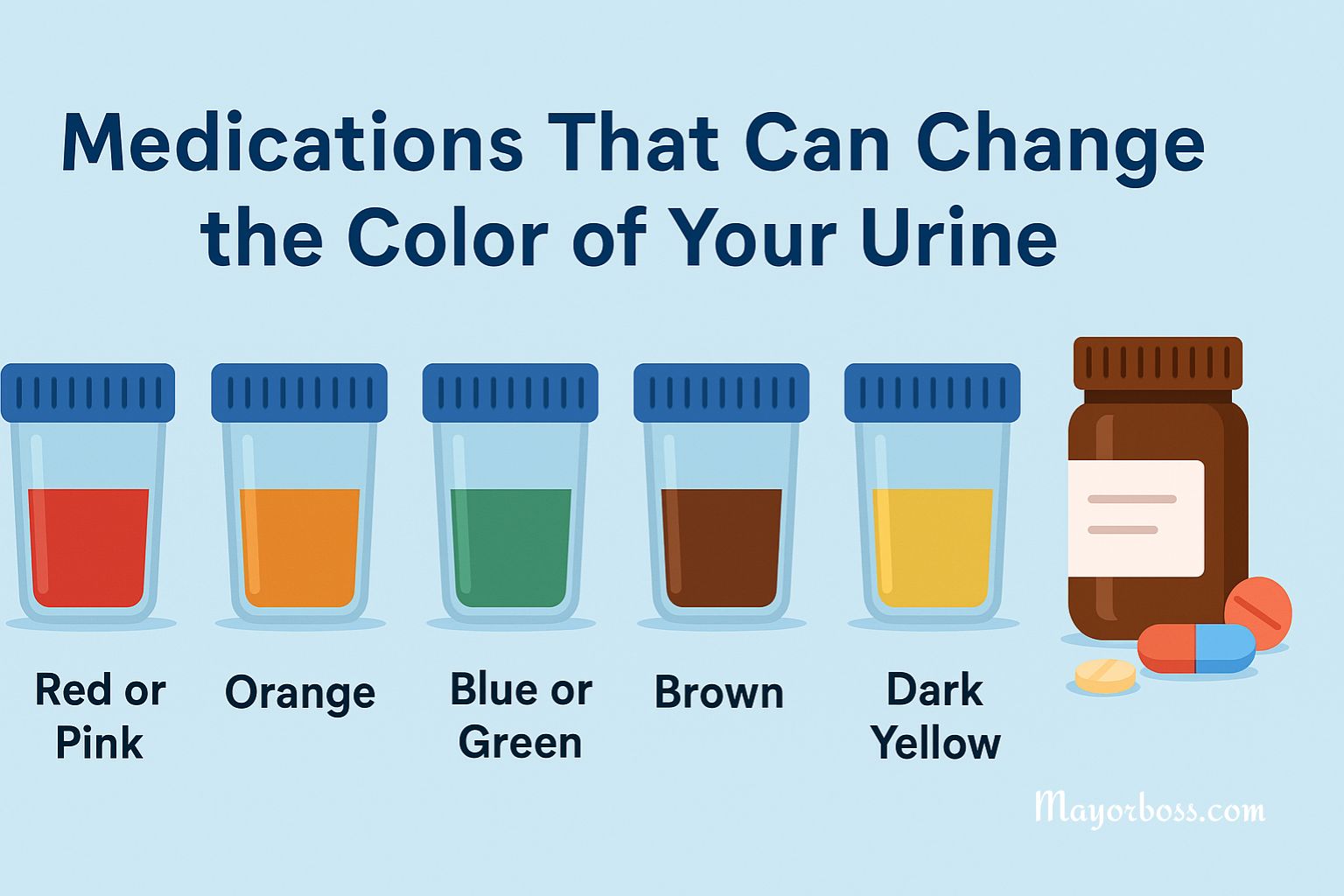Medications That Can Change the Color of Your Urine
Most people don’t pay close attention to the color of their urine—until something changes. It can be surprising, even alarming, to look into the toilet and see a color you weren’t expecting. But in many cases, this change is not caused by a medical problem. Instead, it may be linked to medications you’re taking.
Why do medications affect urine color? Your kidneys help your body remove waste. When you take a medicine, your body breaks it down into smaller parts called metabolites. These are then filtered by your kidneys and removed in your urine. Some of these metabolites—or even the dyes used in pills—can change the color of your urine. This change is usually harmless and goes away when the medication is stopped.

Common Urine Color Changes and the Medications That Cause Them
1. Red or Pink Urine
Seeing red urine can be frightening. But not all red urine means blood. Some medications and foods can give urine a red or pink tint. Here are some medications that may cause red or pink urine:
- Rifampin – an antibiotic used for tuberculosis
- Phenazopyridine – a pain reliever used for urinary tract discomfort
- Senna-containing laxatives – herbal laxatives sometimes used for constipation
- Clofazimine – used for leprosy
If your urine looks red and you haven’t taken any of these medications or eaten red-colored foods (like beets), seek medical advice. Blood in urine could point to an infection or other health condition.
2. Orange Urine
Bright orange urine can come from medicines, severe dehydration, or certain foods. Dehydration makes urine more concentrated, which may intensify the color. The following medications that may cause orange urine:
- Phenazopyridine – again, used for urinary pain relief
- Rifampin
- High-dose vitamin B2 (riboflavin)
- Warfarin – a blood thinner, in some cases
While orange urine is usually not serious, it can stain clothing or contact lenses. Make sure to drink enough water. If the color stays orange after stopping the medication, let your doctor know.
3. Blue or Green Urine
Blue or green urine may seem unusual, but a few medications and dyes can cause it. Sometimes, a harmless dye added to a pill passes through your kidneys. Here are a few medications that may cause blue or green urine:
- Amitriptyline – a medication for depression and nerve pain
- Propofol – an anesthetic used during surgeries
- Cimetidine – used for acid reflux or ulcers
- Indomethacin – an anti-inflammatory drug
- Methylene blue – a dye used in some medical tests and treatments
In rare cases, green urine may signal a urinary tract infection caused by certain bacteria. If the color is persistent or paired with symptoms like pain or burning, seek medical care.
4. Brown or Tea-Colored Urine
Brown urine can look like cola or dark tea. It may come from muscle injury, liver problems, or certain drugs. Here are five examples of medications that may cause brown urine:
- Metronidazole – an antibiotic
- Chloroquine or primaquine – used to prevent or treat malaria
- Levodopa – for Parkinson’s disease
- Methyldopa – for high blood pressure
- Nitrofurantoin – another urinary tract antibiotic
Brown urine may also appear if you’re dehydrated. But if you also have yellowing of the skin or eyes, or if the urine remains dark, talk to a doctor. These could be signs of liver damage.
5. Dark Yellow or Neon Yellow Urine
Vivid yellow urine is most often linked to high levels of certain vitamins, especially vitamin B2 (riboflavin). Many multivitamins contain riboflavin, which is water-soluble. That means any extra amount leaves the body through your urine. This kind of color change is not harmful and usually fades within a few hours.
When to Be Concerned
Most changes in urine color from medications are harmless. However, you should contact a doctor if:
- The color change lasts more than a few days after stopping the medication.
- You also have pain, fever, or a burning feeling while urinating.
- The urine smells very bad or looks cloudy.
- You notice blood or clots.
- Your skin or eyes look yellow.
Urine can reveal clues about your health. Always report sudden, unexplained changes to a healthcare provider—especially if they happen without a known cause.
